Alberta
My European Favourites – Helsinki, Finland
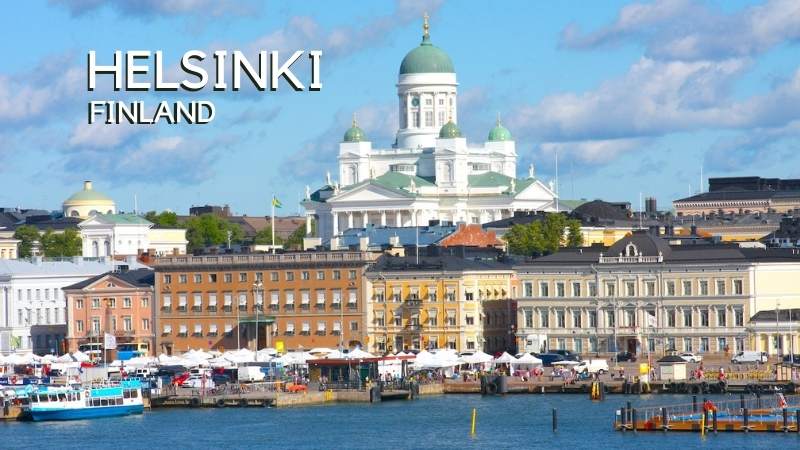
 Founded only in the 16th century, Helsinki is the geographic, political, financial and cultural capital of Finland. In addition to the area Helsinki encompasses on the mainland, it includes over 300 islands on the inlets and bays of the easternmost arm of the Baltic Sea, the Gulf of Finland. Combined with Stockholm and Tallinn, Helsinki is one of our top tour destinations for youth hockey and ringette teams for over twenty years. Finns are avid sports people and great hosts for our Canadian groups.
Founded only in the 16th century, Helsinki is the geographic, political, financial and cultural capital of Finland. In addition to the area Helsinki encompasses on the mainland, it includes over 300 islands on the inlets and bays of the easternmost arm of the Baltic Sea, the Gulf of Finland. Combined with Stockholm and Tallinn, Helsinki is one of our top tour destinations for youth hockey and ringette teams for over twenty years. Finns are avid sports people and great hosts for our Canadian groups.

View of Helsinki harbour’s busy Market Square and the prominent Lutheran Cathedral.
Before gaining independence in 1917, Finland was ruled by the Swedes and Russians. The city was founded by Sweden’s King Gustav in 1550 to rival the Hanseatic League member city once known as Reval. Today, Reval is known as Tallinn, Estonia, and it can be reached by a two hour ferry ride.
In 1809, Russia gained control of Helsinki, and in 1812, moved Finland’s capital city from Turku to Helsinki. The decision was made because Helsinki was closer to St. Petersburg and easier to defend because of the Sveaborg sea fortress which guards the sea entrance into the city. Today the sea fortress is named Suomenlinna, and is one of the city’s most popular attractions.
The population of Helsinki proper is about 650,000, and it has a metro population of around 1.5 million including its neighboring municipalities like Vantaa and Espoo. This makes it the 3rd largest city of the Nordic countries, after only Stockholm and Copenhagen. While having all the conveniences of a modern city, Helsinki is a great destination for nature lovers. There are parks and vast areas of unspoilt nature to explore year round. In the summer months, when days are long, there are beaches, boating and watersport opportunities on the sea or at nearby lakes.
Helsinki has an interesting mix of various architectural styles including modern structures that are on the cutting edge of design. The city has a vibrant nightlife with many clubs, bars and late night eateries. The culinary scene is varied from the popular local hamburger chain, Hesburger, to Michelin-star restaurants. There is even a restaurant in the city centre decorated with rustic tables and old tractors serving traditional reindeer dishes. If you want to enjoy a beer while passing Helsinki’s main sights, you may be interested in the Sparakoff Pub Tram. The red colored tram with the destination board reading “PUB” takes about 45 minutes to make a round trip. Plenty of time to enjoy a beverage or two.

The Russian Orthodox Uspenski Cathedral, the Allas Sea Pools and the Sky Wheel Helsinki.
Katajanokka Island
Inaugurated in 1868, the Uspenski Cathedral is the center of the Eastern Orthodox faith in Finland. The cathedral was built using 700,000 red bricks that were brought in by barge from a demolished fortress in the Baltic. Entrance to the cathedral is free, and about half a million tourists visit it annually to see the elaborately decorated interior and several valuable icons. The cathedral was built upon a hillside of the Katajanokka island, which forms the eastern side of the city center and the Helsinki harbour. Overlooking the city, the cathedral is a great place to start our journey through Helsinki.
Walking down from the cathedral to the waterfront, we immediately see the 40 meter tall Sky Wheel Helsinki. The wheel offers great views of the city, the sea and the surrounding islands. The wheel has two unique gondolas. One’s interior has leather seats with a glass floor and includes a bottle of champagne for a 30 minute ride. The other is the SkySauna. Yes, we all know Finns love their saunas, so why not combine a ferris wheel ride with a sauna.
Next to the wheel, we find the Allas Sea Pool which has three pools right in the Heslinki harbour. One pool is for lap swimming, one is for families and one is a salt water pool. The fresh water pools are heated, the salt water pool is not. In addition to the pools, there are saunas and a restaurant with terraces to enjoy the views. For those looking to experience a Finnish sauna, it’s a convenient location. If you have time, I would recommend the Löyly sauna which is located near the Tallin ferry terminal. There are many places in Helsinki offering a sauna, so finding one is easy.

The Presidential Palace, Market Square and a food vendor selling a fish and vegetable lunch.
Kauppatori Market Square
Taking one of the little bridges from Katajanokka island to the market square we will pass the yellow Presidential Palace. The former Russian imperial palace, contains the Office of the President of the Republic and is used for official functions and receptions. Continuing past the palace, we arrive at the Kauppatori Market Square. The square has been a marketplace for hundreds of years and is a popular tourist attraction. The year round market’s kiosks sell fresh fish, fruit, vegetables, handcrafts, clothing and souvenirs. There are also stands that sell prepared food and beverages. A warm bowl of salmon soup with rye bread or a plate of grilled fish with vegetables make a quick, inexpensive and tasty lunch. The square faces the busy Port of Helsinki (Helsingen Satama) and from here you can take boat tours of the archipelago or to the Suomenlinna Island fortress. You can also see the huge Viking and Silja Line ferries arriving in the morning and departing in the evening for Stockholm.

Senate Square with the Helsinki Cathedral. Group photo of our 2016 World Juniors fan tour.
Senate Square
The light blue Helsinki City Hall is located right in front of the Market Square. Taking a side street along the City Hall we will arrive at the expansive Senate Square with a statue of Russian Czar Alexander II at its centre. The white neo-classical Lutheran Helsinki Cathedral, built in 1852, dominates the north side of the square and towers over the city center. The west and east sides of the square have two similarly looking yellow buildings. The eastern building houses the offices of the prime Minister of Finland and the cabinet. The one on the west side is the main building of the University. North of the University building is the National Library of Finland. The ‘Sederholm house” on the southeast corner of the square is the oldest, built in 1757. The square is used for many events including art displays, food festivals, concerts, New Year’s celebrations and the Christmas market.

Helsinki’s Old Market Hall, the Havis Amanda fountain and the Esplanadi’s pedestrian walkway.
The Old Market Hall and the Esplanadi
Walking back towards the harbour, we will go past the market square on the west side of the harbour to Helsinki’s Old Market Hall. Open in 1889, it is Finland’s oldest indoor market. In the lively market you will find merchants selling meat, fish, shellfish, cheese, fruit, vegetables, baked goods, spices, coffee, tea and even a small wine and spirits shop. The cafés and restaurants in the Old Market Hall are a great place to have a break from sightseeing or have a nice lunch.
After grabbing a coffee at the Market, we head back towards the market square and to an interesting fountain that was built in 1908. The Havis Amanda fountain has a nude female statue, often referred to as Manta, at the centre. It was created by Finnish artist Ville Vallgren at his studio in Paris, France. The fountain has four seals looking up to the sea nymph as she rises out of the water. The first of May is the start of the summer for students and in celebration they would don a white cap. Since the early days of the fountain, students have celebrated “May Day” by placing a cap on the head of Manta.
The Havis Amanda fountain sits at the foot of the National urban park called the Esplanadi. This elongated park, opened in 1818, has a wide pedestrian center with numerous benches and green space on either side. The historic Kappeli restaurant, open since 1867, and the Espa Stage, used for concerts, are at the eastern entrance to the Esplanadi. There are pieces of art throughout the Esplanadi including a statue of Finland’s national poet, Johan Ludvig Runeberg, at the very centre of the park. At the western end of the park, we find the Swedish language theatre aptly named, the Swedish Theatre. Originally built in 1860, it burned down just three years later. In 1866, it was rebuilt in neo-classical style, but in 1935 it was renovated and the richly decorated exterior was changed by the architects to a simpler “functionalist” style.
The Esplanadi has a street on either side of the park and the surrounding buildings, especially on the north side, have upscale shopping and restaurants. On the north west end of the park just across the street from the Swedish Theatre is the Stockmann Department Store. The iconic Stockmann building, the largest department store in the Nordic countries, was built in 1930 and the brand’s history dates back to 1858.

The entrance façade and clock tower of the Helsinki Train Station. The unique Kamppi Chapel.
The Central Station, Art and A Chapel of Silence
Turning right at the Mannerheimintie street, we walk about 200 meters to Kaivokatu street where we can see the train station on the right. The Helsinki Central Station is the main hub for commuter and long-distance trains for approximately 200,000 people per day. The impressive Finnish granite building was inaugurated in 1919 and has a pair of statues standing guard while holding spherical lamps on each side of the grand entrance. Along with the “stone men,” the station is known for the clock tower on its east side. The Helsinki Central Station has a city metro station, restaurants and an underground shopping centre.
Beyond the train station is a huge open space called the Rautatientori, or Railway Square. On the south side of the square is the Ateneum, the museum of Finnish and international art. The museum, in a beautiful 1887 building, has Finnish works of art from the 18th century to the 20th century and is one of the three museums that form the Finnish National Gallery. In addition to the extensive art from Finland, it has over 600 international pieces.
Going back on Kaivokatu street we cross Mannerheimintie street to Simonkatu street and walk about a block. We will see a curious looking oval cylindrical building with a wood exterior. This is the very unique Kamppi Chapel or the “Chapel of Silence.” The chapel holds up to 60 people and is intended to be a place of calm and silence in a busy urban centre. The chapel is free to visit during opening hours.

The Lutheran Temppeliaukio Church’s alter, pipe organ and the upper balcony.
Parliament and Museum District & Rock Church
After enjoying a moment of silence, we make our way back to Mannerheimintie street and continue along it until we reach Mannerheim Square and the equestrian statue of Marshall Gustaf Mannerheim. The bronze statue of the Finnish military leader and statesman was erected in 1960. The statue sits in front of the Kiasma, the museum of contemporary art, which was built in 1990. Like the Ateneum, the Kiasma is part of the Finnish National Gallery. Near the Kiasma, you will find the architecturally striking Helsinki Central Library Oodi, the Helsinki Music Centre, the National Museum of Finland and the event and congress center, Finlandia Hall. Across the street from the Mannerheim statue, we also find the Finnish Parliament building. The red granite parliament building with fourteen Corinthian columns was built in 1931.
Only a couple of minutes walk from the Mannerheim Square is the Temppeliaukion Kirkko, which is better known as the Rock Church. Designed by architect brothers Timo and Tuomo Suomalainen and opened in 1969, the Lutheran church was built into solid rock, and is filled with natural light from the large skylight that leads up to the copper dome. The acoustics in the church are exceptional and it is frequently used for concerts. The exposed rock walls of the church create an interesting backdrop for the altar and an interesting contrast with the church organ with 3001 pipes. The church welcomes over half a million visitors a year.

The Sibelius monument, our Oilers group with Jari Kurri at Hartwall Arena and the pub tram.
The Sibelius Monument and the Olympic Stadium
West of Helsinki’s city center is Seurasaarenselkä Bay. On the eastern side of the bay, you will find Sibelius Park and the Sibelius Monument. The monument, made from more than 600 hollow steel pipes, is dedicated to Finland’s greatest composer, Jean Sibelius. He is noted for having encouraged, through his works, the rise of a Finnish national identity and independence from Russia. In the center of the bay is the densely forested Seurasaari island which is home to the Seurasaari Open-Air Musuem. The museum has transplanted wooden buildings from throughout Finland.
In 1952, Helsinki was the host city for the 15th Olympiad and is the northernmost city to host the summer Olympics. The flame was lit by Finland’s greatest Olympian, runner Paavo Nurmi, who won 9 gold and 3 silver medals at the 1920, 1924 and 1928 games. The Olympic Stadium is located only two kilometers north of the city centre and was originally built for the 1940 Olympics that were cancelled due to the second World War. The stadium has undergone renovations in the early 1990s, in 2005 for the World Championships in Athletics, and another renovation phase was scheduled to be completed in 2020. Over time, the stadium has gone from being able to host 70,000 spectators to just over 40,000. The stadium today hosts mainly soccer games, athletics competitions and concerts. The stadium’s 72 meter tower is a Helsinki landmark and its height is equal to the length of Matti Järvinen’s gold medal javelin throw in the 1932 Summer Olympics. The stadium visitor center is located at the foot of the tower. While in Finland, you may want to try the alcoholic “Long Drink” that was developed to serve visitors to the 1952 Olympics. Locally the Long Drink is called a “Lonkero” and the original, a mix of gin and grapefruit soda, is made by Hartwall.
Not far from the Olympic Stadium is the Linnanmäki amusement park, which opened in 1950. The park is owned by a non-profit agency that operates the park to raise funds for Finnish child welfare programs. South of the park is Töölö Bay with a surrounding green space, walking paths and two important cultural centres, the Helsinki City Theatre and the Finnish National Opera and Ballet.
A couple of kilometers north of Linnanmäki is the 14,000 seat Hartwall Arena, which is the home of the KHL’s Jokerit hockey team. The arena was built in 1997 and is used mostly for basketball, hockey and concerts. In 2016, we had a large group of Canadian hockey fans in Helsinki for the IIHF World Junior Hockey Championships, and the Hartwall Arena was the main venue for the tournament. Finland won gold with a team loaded with future NHLers Sebastian Aho, Patrick Laine, Mikko Rantanen, Kasperi Kapanen, Olli Juolevi and tournament MVP Jesse Puljujarvi. The atmosphere in the arena was electric with thousands of patriotic Finns erupting in joy at the final whistle. If Canada can’t win, the next best thing is to get caught up in the passion of the local fans.
In the fall of 2018, we had a group of Edmonton Oilers fans in Gothenburg, Sweden for the NHL season’s opening game against the New Jersey Devils. At the end of the tour, we took the overnight ferry from Stockholm to Helsinki. During our city tour, we stopped at the Hartwall arena and we surprised the group with a meeting with Oilers legend Jari Kurri. After many photos and autographs, Kurri, who was the General Manager of local team Jokerit, graciously talked hockey and watched practice with us.

The Suomenlinna ferry leaving from Market Square, the fortress walls and the dry dock.
Suomenlinna
The Suomenlinna, or Sveaborg, is an inhabited sea fortress built on eight islands south east of the city centre at the entrance to Helsinki harbour. A UNESCO World Heritage site, it was originally founded by the Swedes in 1748, but in 1808, the fortress was overtaken by Russia. It remained in Russian control until Finnish independence in 1918. The fortress welcomes over half a million tourists and locals annually. The summer months are especially busy and Suomenlinna can be easily reached by a short ferry ride from Market Square.
There are just under 1000 permanent residents on Suomenlinna and just under 400 people who work on the island year-round. Some of the reconstruction of the fortifications and general maintenance is done by volunteer inmates, who are part of an on-site minimum-security penal labour colony. A guided visit to the fortress includes Great Castle Courtyard, Piper’s Park and the large Dry Dock. There are various museums at Suomenlinna including one detailing the life of Swedish officers in the 18th century, a toy museum, a military museum, a submarine museum and a customs museum. The main Suomenlinna Museum, located in the Suomenlinna Centre, details the history of the fortress and its restoration.

The Silja Line ferry, leaving the Helsinki harbour, and the ship’s entertainment lounge.
Ferry to Stockholm, Tallinn, Riga and St. Petersburg
Getting around the Baltic Sea is easy with the numerous daily sailings by large ferry boats that include onboard shopping, restaurants, entertainment, and cabin quarters for overnight trips.
From the Helsinki Harbour in the city center, there are two sailings per day to Stockholm, Sweden. The Tallink Silja line uses the Olympia Terminal on the west side of the harbour, while the Viking Line has their terminal on the east side of the harbour on Katajanokka island. The overnight ferries leave in the early evening, and arrive in Stockholm the next morning, about 17 hours later. Prices for a return trip are very affordable.
The newer West Harbour outside of the city center is where you can catch the numerous daily two hour ferries to Tallinn, Estonia. A day trip to Tallinn departing Helsinki in the morning and returning in the evening is common although I would recommend a stay in Tallinn if you have time. The West Harbour is also where you can take the St. Peters Ferry to St. Petersburg, Russia, and with a stay of less that 72 hours you can do it without a visa. These are the main ferry routes, but there may be ferry services to Latvia, Germany and other destinations available.
Lets Go To Helsinki
Even though Helsinki is young city by European standards, it is a great place to visit. In addition to the activities and sights I have outlined here, other parts of Finland, including Lapland, are worth exploring. I have found people in Finland to be friendly, warm, open and sincere. Finland is very safe, and the country regularly ranks high on the list of the best places to live in the world. With convenient and low cost travel by ferry to neighboring countries, it is an easy add to any itinerary of the Baltic region. I look forward to returning to Helsinki with a hockey or ringette group very soon, and in 2027, Finland is scheduled to host the World Juniors again.
Explore Europe With Us
Azorcan Global Sport, School and Sightseeing Tours have taken thousands to Europe on their custom group tours since 1994. Visit azorcan.net to see all our custom tour possibilities for your group of 26 or more. Individuals can join our “open” signature sport, sightseeing and sport fan tours including our popular Canada hockey fan tours to the World Juniors. At azorcan.net/media you can read our newsletters and listen to our podcasts.
Read more stories from Paul Almeida.
Images compliments of Paul Almeida and Azorcan Tours.
Alberta
Game changer: Trans Mountain pipeline expansion complete and starting to flow Canada’s oil to the world

Workers complete the “golden weld” of the Trans Mountain pipeline expansion on April 11, 2024 in the Fraser Valley between Hope and Chilliwack, B.C. The project saw mechanical completion on April 30, 2024. Photo courtesy Trans Mountain Corporation
From the Canadian Energy Centre
By Will Gibson
‘We’re going to be moving into a market where buyers are going to be competing to buy Canadian oil’
It is a game changer for Canada that will have ripple effects around the world.
The Trans Mountain pipeline expansion is now complete. And for the first time, global customers can access large volumes of Canadian oil, with the benefits flowing to Canada’s economy and Indigenous communities.
“We’re going to be moving into a market where buyers are going to be competing to buy Canadian oil,” BMO Capital Markets director Randy Ollenberger said recently, adding this is expected to result in a better price for Canadian oil relative to other global benchmarks.
The long-awaited expansion nearly triples capacity on the Trans Mountain system from Edmonton to the West Coast to approximately 890,000 barrels per day. Customers for the first shipments include refiners in China, California and India, according to media reports.
Shippers include all six members of the Pathways Alliance, a group of companies representing 95 per cent of oil sands production that together plan to reduce emissions from operations by 22 megatonnes by 2030 on the way to net zero by 2050.
The first tanker shipment from Trans Mountain’s expanded Westridge Marine Terminal is expected later in May.
 Photo courtesy Trans Mountain Corporation
Photo courtesy Trans Mountain Corporation
The new capacity on the Trans Mountain system comes as demand for Canadian oil from markets outside the United States is on the rise.
According to the Canada Energy Regulator, exports to destinations beyond the U.S. have averaged a record 267,000 barrels per day so far this year, up from about 130,000 barrels per day in 2020 and 33,000 barrels per day in 2017.
“Oil demand globally continues to go up,” said Phil Skolnick, New York-based oil market analyst with Eight Capital.
“Both India and China are looking to add millions of barrels a day of refining capacity through 2030.”
In India, refining demand will increase mainly for so-called medium and heavy oil like what is produced in Canada, he said.
“That’s where TMX is the opportunity for Canada, because that’s the route to get to India.”
Led by India and China, oil demand in the Asia-Pacific region is projected to increase from 36 million barrels per day in 2022 to 52 million barrels per day in 2050, according to the U.S. Energy Information Administration.
More oil coming from Canada will shake up markets for similar world oil streams including from Russia, Ecuador, and Iraq, according to analysts with Rystad Energy and Argus Media.
Expanded exports are expected to improve pricing for Canadian heavy oil, which “have been depressed for many years” in part due to pipeline shortages, according to TD Economics.
 Photo courtesy Trans Mountain Corporation
Photo courtesy Trans Mountain Corporation
In recent years, the price for oil benchmark Western Canadian Select (WCS) has hovered between $18-$20 lower than West Texas Intermediate (WTI) “to reflect these hurdles,” analyst Marc Ercolao wrote in March.
“That spread should narrow as a result of the Trans Mountain completion,” he wrote.
“Looking forward, WCS prices could conservatively close the spread by $3–4/barrel later this year, which will incentivize production and support industry profitability.”
Canada’s Parliamentary Budget Office has said that an increase of US$5 per barrel for Canadian heavy oil would add $6 billion to Canada’s economy over the course of one year.
The Trans Mountain Expansion will leave a lasting economic legacy, according to an impact assessment conducted by Ernst & Young in March 2023.
In addition to $4.9 billion in contracts with Indigenous businesses during construction, the project leaves behind more than $650 million in benefit agreements and $1.2 billion in skills training with Indigenous communities.
Ernst & Young found that between 2024 and 2043, the expanded Trans Mountain system will pay $3.7 billion in wages, generate $9.2 billion in GDP, and pay $2.8 billion in government taxes.
Alberta
Canada’s postal service refuses to help with Trudeau’s gun ban buyback program: report
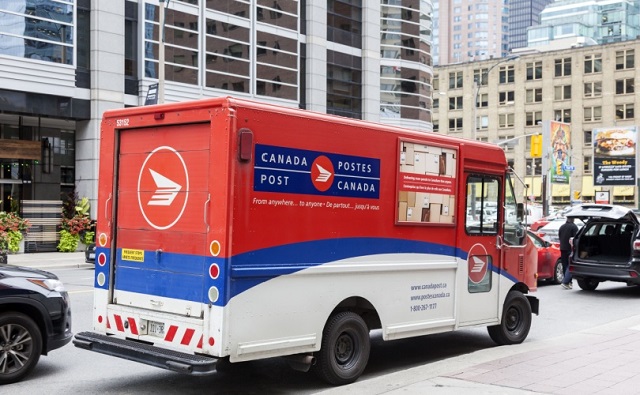
From LifeSiteNews
According to a report, Canada’s mail service notified the Trudeau government via a letter that it would not participate in the buyback scheme, citing safety concerns for its employees.
Canadian Prime Minister Justin Trudeau’s federal government crackdown on legal gun owners through a buyback scheme has hit a major roadblock after Canada Post, a federal-run institution, signaled it will refuse to participate in scooping up thousands of legally purchased firearms at the bequest of the government.
According to government sources in a recent Radio-Canada report, the Trudeau Liberals were hoping Canada Post would help collect approximately 144,000 “assault” and “military-style” firearms that were recently banned by the government. Canada Post currently delivers guns via mail that are legally purchased to those with firearms licenses.
The inside source, who chose not to be named, noted that Canada Post notified the Trudeau government via a letter that it would not participate in the buyback scheme, citing safety concerns for its employees.
According to the source, Canada Post is still talking with the federal government, with one idea being to allow it to transport guns but not oversee getting them from their legal owners.
“It’s a challenge, but we do not think this jeopardizes our timetable or the government’s desire to move forward,” said one source, adding, “We want the discussions to continue.”
As for the Trudeau federal government, it continues to say that having Canada Post be involved in the gun buyback is the “most efficient” as well as “least costly” way to get the guns back from owners.
Trudeau’s gun grab was first announced after a deadly mass shooting in Nova Scotia in May 2020 in which he banned over 1,500 “military-style assault firearms” with a plan to begin buying them back from owners.
Late last year, the Trudeau government extended the amnesty deadline for legal gun owners until October 30, 2025. It should be noted that this is around the same time a federal election will take place.
The Canadian government’s controversial gun grab Bill C-21, which bans many types of guns, including handguns, and mandates a buyback program became law on December 14, 2023, after senators voted 60-24 in favor of the bill.
In May 2023, Bill C-21 passed in the House of Commons. After initially denying the bill would impact hunters, Trudeau eventually admitted that C-21 would indeed ban certain types of hunting rifles.
Alberta and other provinces promise to fight Trudeau’s gun grab tooth and nail
On the same day news broke that Canada Post said it would not participate in Trudeau’s gun buyback, Alberta chief firearms officer Teri Bryant last Wednesday issued a statement saying, “We urge the federal government to abandon this ill-advised program and meaningfully consult the provinces as we work to address the actual causes of firearms crime.”
“Canadians are still waiting for concrete details about the federal firearms confiscation program that has been in the works since 2020, and Canada Post’s refusal to participate in the federal government’s firearms ‘buy-back’ program is just one more example of how little forethought or engagement has gone into implementation of this program,” Bryant said.
Bryant noted that the buyback will not “significantly improve public safety” because it does not target those “involved in criminal activity and gun violence, and Albertans can be assured that our government will continue to advocate for our law-abiding firearms community.”
“We believe in a principled and informed approach to firearms policy that preserves public safety and recognizes the immense responsibility that comes with firearms ownership,” she noted.
Bryant observed that the federal confiscation program is not only causing uncertainty for many firearms businesses, but it is also “pulling attention and resources away from programs and initiatives that would help address public safety.”
“It is also undermining public confidence in the fairness of our entire firearms regulatory scheme,” she added.
Indeed, LifeSiteNews reported in February that despite Trudeau’s crackdown on legal gun owners, Statistics Canada data shows that most violent gun crimes in the country last year were not committed at the hands of legal gun owners but by those who obtained the weapons illegally.
Alberta Premier Danielle Smith, along with premiers from no less than four additional provinces, are opposed to C- 21.
Late last year, Smith promised she would strengthen the gun rights of Albertans because of Trudeau’s gun grab.
-

 John Stossel2 days ago
John Stossel2 days agoWhy Biden’s Just Wrong: NO ONE “Knows How to Make Government Work.”
-

 Business2 days ago
Business2 days agoWEF panelist suggests COVID response accustomed people to the idea of CBDCs
-

 COVID-192 days ago
COVID-192 days agoPeckford: Hallelujah! Supreme Court of Canada to hear Newfoundland and Labrador charter case
-
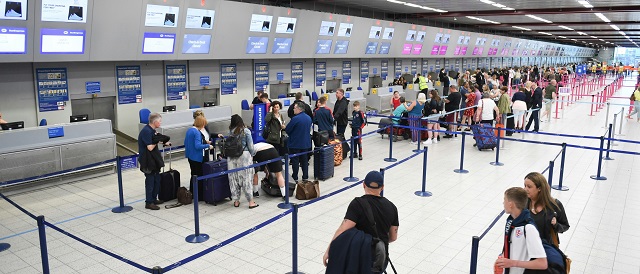
 illegal immigration2 days ago
illegal immigration2 days agoFlight Docs Reveal Which Cities Are Receiving Migrants Under Biden’s Parole Program
-

 Alberta2 days ago
Alberta2 days agoCanada’s postal service refuses to help with Trudeau’s gun ban buyback program: report
-
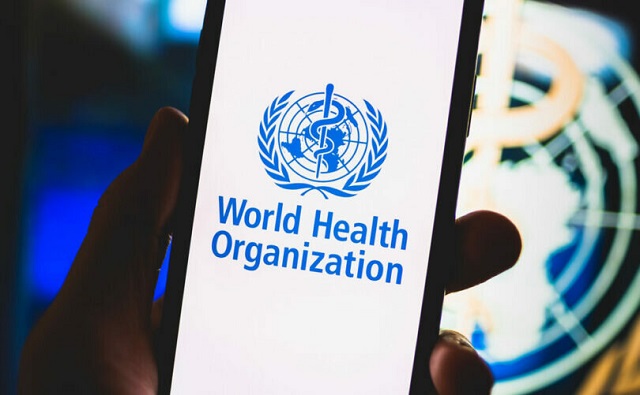
 COVID-192 days ago
COVID-192 days agoStates move to oppose WHO’s ‘pandemic treaty,’ assert states’ rights
-
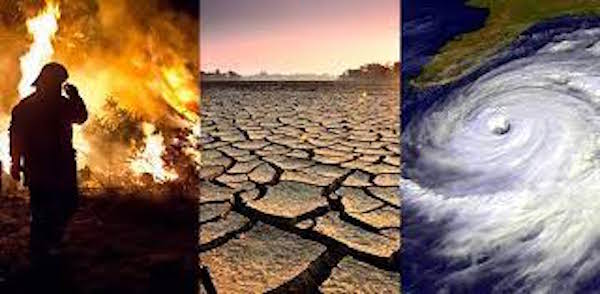
 Environment1 day ago
Environment1 day agoJournalism Misrepresent Climate Science
-
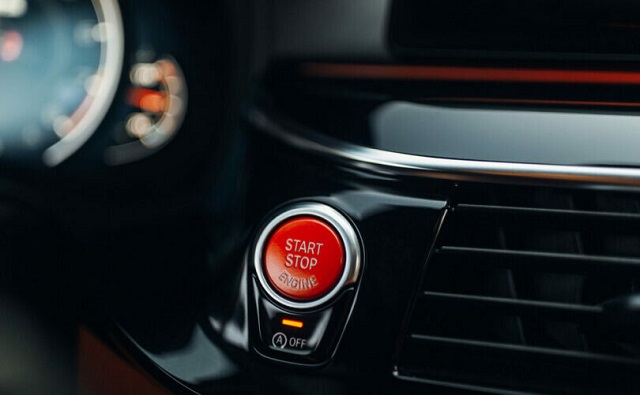
 Automotive1 day ago
Automotive1 day agoVehicle monitoring software could soon use ‘kill switch’ under the guise of ‘safety’




